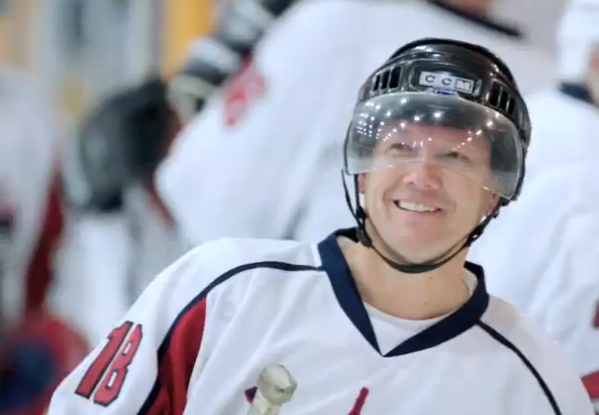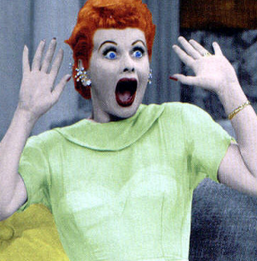 The past few weeks I have shared a series of posts and thoughts on swag, surprise and social engagement. Today, we’re going to segue into full-on surprise. Valentines week seems like an appropriate time for this transition, as surprise and delight is all about creating a memorable love transaction between a brand and their fans.
The past few weeks I have shared a series of posts and thoughts on swag, surprise and social engagement. Today, we’re going to segue into full-on surprise. Valentines week seems like an appropriate time for this transition, as surprise and delight is all about creating a memorable love transaction between a brand and their fans.
Dr. Jonah Berger spoke at the 2013 F.I.R.E. Sessions, and left behind a few advance copies of his new book Contagious: Why Things Catch On. I read it cover to cover while held up at the airport (Thanks, Nemo!) this weekend. (Go pre-order your copy now! It’s awesome.)
Amongst the great thoughts in the book, Jonah shares some particularly interesting (and surprise-relevant) insights on the power of awe:
“Awe is the sense of wonder and amazement that occurs when someone is inspired by great knowledge, beauty, sublimity, or might. It’s the experience of confronting something greater than yourself. Awe expands ones frame of reference and drives self-transcendence. Awe is a complex motion and frequently involves a sense of surprise, unexpectedness or mystery.” (page 88) Awe also inspires sharing. For example, Jonah and his team determined that awe-inspiring articles were 30% more likely to make the “Most Emailed” list.
With that in mind…enjoy these seven examples of awesome (or maybe I should say awe-some) surprise and delight. Combined, these 7 videos have garnered over 12 million views. If the average person has 120 Facebook friends, that means these shares could have reached more than 1,440,000,000 people on Facebook alone. Behold the power of awe.
CASE STUDY 1: KLEENEX (52k views)
Scenario: Kleenex is a brand that people reach for (literally) when they’re feeling crappy.
Opportunity: Make people feel better by making them feel extra special.
SO…WHAT HAPPENED?
[youtube http://www.youtube.com/watch?v=bGFflwe4mtI?feature=oembed]
CASE STUDY 2: BUDWEISER (4 million views)
Scenario: Budweiser is a non-pretentious beer for everyone.
Opportunity: Bring people together to celebrate the underdogs.
SO…WHAT HAPPENED?
[youtube http://www.youtube.com/watch?v=y0qZYqdsYAg?feature=oembed]
CASE STUDY 3: TACO BELL (134k views)
Scenario: Last year someone played an elaborate joke on the town of Bethel, Alaska (pop. 6,000) by starting a rumor that Taco Bell had plans to set up shop in their town. With the nearest TB more than four hours away, residents were crushed to learn the truth.
Opportunity: Turn a negative into a positive—and let them eat tacos!
SO…WHAT HAPPENED?
[youtube http://www.youtube.com/watch?v=uXQYrKiYQZw?feature=oembed]
CASE STUDY 4: TROPICANA (500k views)
Scenario: Tropicana orange juice is a well-known breakfast beverage. Sunshine and Tropicana go together like peanut butter and jelly, bacon and eggs, Hall and Oates.
Opportunity: Bring a little sunshine to those who need it most—a group of residents in the Canadian arctic who haven’t seen sunlight in more than a month.
SO…WHAT HAPPENED?
[youtube http://www.youtube.com/watch?v=4Krky4i6Xk8?feature=oembed]
CASE STUDY 5: RADIO KLASSIK (5.9 million views)
Scenario: Classic music and radio are two things that don’t rank high on most people’s “must have” list this day in age. That’s a bad thing when you’re a classic radio station.
Opportunity: If the people won’t come to you, bring the music to the people.
SO…WHAT HAPPENED?
[youtube http://www.youtube.com/watch?v=gww9_S4PNV0?feature=oembed]
CASE STUDY 6: FORD (50k views)
Scenario: Ford makes cars that everyone can enjoy on some level.
Opportunity: Nobody should be excluded from the joy that comes from stepping behind the wheel of a fast car. Could Ford create a remarkable driving experience for the visually impaired?
SO…WHAT HAPPENED?
[youtube http://www.youtube.com/watch?v=YXCM6O4bjro?feature=oembed]
CASE STUDY 7: HONDA (1.5 million views)
Scenario: When Monsters Calling Home couldn’t afford studio time, the band was forced to make a music video in their Honda.
Opportunity: Inspired by their brand declaration “Honda Loves You Back,” the people at Honda challenged themselves to find a way to give a little love back to Monsters Calling Home.
SO…WHAT HAPPENED?
[youtube http://www.youtube.com/watch?v=0Y7AzNj2s28?feature=oembed]


